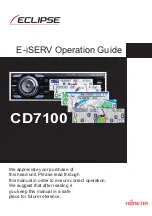
18
M I C R O P H O N E O P E R A T I O N
EVO HANDHELD
DYNAMIC MICROPHONE
Features
•
Frequency response tailored to vocalist use.
•
Built-in windscreen/pop filter for effective suppression of
pop and breath noise.
•
High feedback resistance due to frequency-independent
supercardioid polar response.
Description
The EVO Handheld Dynamic Microphone has a supercar-
dioid polar response and is designed primarily as a vocalist
microphone for rough stage use. Due to its wide frequency
response, which slightly favors the midfrequency and treble
regions, this microphone ensures good intelligibility of speech.
The term supercardioid polar response means that the EVO
Handheld Dynamic Microphone is most sensitive to sound
arriving in the front, less sensitive to sound arriving in the
sides, and even less sensitive to sound arriving in the rear. This
directional characteristic is virtually the same for all frequen-
cies and is, therefore, frequency independent.
Figure 1. The EVO Handheld Dynamic Microphone.
Shock-Absorbing Inner Grille
The EVO Handheld Dynamic Microphone is fitted with a
shock-absorbing inner grille for transducer protection against
damage. The strong die cast housing and the wire-mesh outer
grille provide additional protection for the transducer system.
Effective Windscreen
A very effective windscreen against pop and breath noise and
sibilance is formed by the outer steel wire mesh grille and a
layer of a special textile material.
Gold-plated XLR Connector
The EVO Handheld Dynamic Microphone also has a stan-
dard 3-pin male, gold-plated, XLR-type connector for wired
use. This connector type is internationally standardized so
that you can connect the microphone to the rest of your
equipment by using any commercially-available microphone
cable fitted with a female 3-pin XLR-type connector.
Wiring
The EVO Handheld Dynamic Microphone is a low-imped-
ance microphone with an electrical impedance rated at
200 ohms and has a balanced output (see Figure 2).
Figure 2. Balanced wiring diagram for EVO Handheld Microphone.
In order to prevent interference from stray magnetic fields,
use the supplied two-conductor shielded cable to connect the
microphone to a
MIC
input on EVOi.sys.
NOTE: Do not use an unbalanced cable, since it may act as an antenna
and pick up stray magnetic fields.
3
2
1
1
3
2
Содержание EVOi.sys
Страница 2: ......
















































